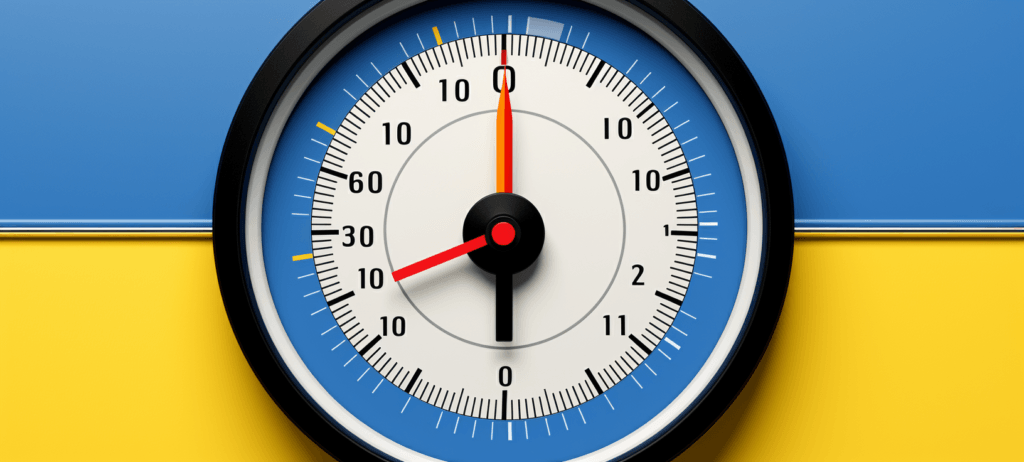-
 Published: Dec 22, 2023
Published: Dec 22, 2023
-
 6 min. read
6 min. read
-
 Macy Storm
Macy Storm Content Marketing Consultant
Content Marketing Consultant
- Macy is a content marketing consultant with over five years of experience creating content for dozens of industries including home services, recreation, and education. She’s written about every marketing topic under the sun, from SEO to AI to email marketing. Her work has been featured by Search Engine Journal, HubSpot, Entrepreneur, Clutch, and more. In her free time, Macy enjoys crafting, reading comic books, and walking her dog Daisy.
What is a good Core Web Vitals score?
- Largest Contentful Paint of less than 2.5 seconds
- First Input Delay of less than 100 milliseconds
- Interaction to Next Paint of less than 200 milliseconds
- Cumulative Layout Shift of less than 0.1
Did you know that 83% of users expect websites to load in three seconds or less? Having a fast-loading website is crucial for keeping prospects on your website and engaging with your business. To see if your website loads quickly enough, you must check your Google Core Web Vitals score.
Your Core Web Vitals score shows how your page performs and loads based on real usage data.
But what’s a good Core Web Vitals score?
On this page, we’ll cover everything you need to know, including:
- What is Google Core Web Vitals score?
- What’s a good Core Web Vitals score?
- How to improve Google Core Web Vitals score
Keep reading to find out how you can improve your user experience by getting a good Core Web Vitals score!
P.S. Don’t forget to subscribe to our email newsletter to get the latest tips and tricks on all things marketing!
Don’t miss our Marketing Manager Insider emails!
Join 200K smart marketers for the hottest marketing news and insights in your inbox.
Inline Subscription Form
“*” indicates required fields


What is Google Core Web Vitals score?
The Google Core Web Vitals score is a report that shows you how your pages perform, in terms of page load speed, by using real data. This score is broken down into three metrics:
- Largest Contentful Paint (LCP): The amount of time it takes for the largest content element on your page to load.
- First Input Delay (FID): The time it takes for an element on your page to respond after a user interacts with it (clicking on links, tapping a button, etc.)*
- Cumulative Layout Shift (CLS): The visual stability of a website. This metric looks at how elements shift when a page is downloaded and rendered.
You can access your Core Web Vitals report through your Google Search Console account.
* In March 2024, Interaction to Next Paint (INP) will replace FID. This metric gives an overall assessment of a page’s responsiveness to user interactions and the time it takes for elements on the page to respond.
What’s a good Core Web Vitals score?
Now, it’s time to answer the question of the hour: What’s a good Core Web Vitals score?
Here’s a breakdown of the scores you’ll want to get:
- LCP:5 seconds or less
- FID: Less than 100 milliseconds
- INP: Less than 200 milliseconds
- CLS: Less than 0.1
The best Core Web Vitals score will be numbers less than the ones listed above, which indicates your page loads quickly and provides a positive user experience as a result.
How to improve Google Core Web Vitals score
You know what a good Google Core Web Vitals score is. You check your Google Console account, pull up your report, and find that you’re missing the mark. So, what do you do now?
If your numbers aren’t perfect, don’t worry. You can improve your Core Web Vitals score to ensure you deliver the best user experience for your audience.
We’ll break down tips for each metric and what you can do to improve that specific Core Web Vitals metric:
How to improve your LCP score
If your LCP is over 2.5 seconds, you need some quick wins to help you improve the load time of the largest elements on your website. Here are some things you can do to improve this metric:
- Use lazy loading: Lazy loading is when elements only load as someone scrolls down your page. It can prevent your website from trying to load all the big elements at once, which improves your LCP.
- Remove large elements: Large page elements slow down your website’s load time. You’ll want to limit the number of large elements you use and remove any you don’t need on your website.
- Host videos on third-party platforms: Videos are large elements that can slow down your website. Make sure you host your videos on a third-party platform, like YouTube or Wistia, to ensure they load faster.
How to improve your FID score
If you want to get the best Core Web Vitals score, you must ensure that your page is responsive when users click. To improve engagement and responsiveness on your pages, you can:
- Minimize JavaScript: If your website is loading JavaScript, it becomes very difficult for website visitors to interact with your website. Minimizing will help ensure users can interact with website elements without a hitch.
- Enable browser caching: Browser caching stores website resources, like images and videos, so that when users load your website, those elements don’t slow it down. It helps your website load faster and improve user engagement.
- Remove unnecessary plugins and widgets: Plugins can slow down your website, which negatively impacts user experience and engagement. Remove any unnecessary plugins to ensure a smooth experience.
How to improve your INP score
As we mentioned earlier, INP will replace FID by March 2024. So, if you want to start optimizing and preparing for this metric, here are some things you can do:
- Check your INP score in Google Search Console: Google Search Console will tell you your INP metric so you can see how your pages perform for the metric.
- Identify low-performing pages: Any page that has a poor INP score will need optimization. You can start improving these pages now to get ahead of the game.
- Use Google’s tools to find exact issues: Tools like PageSpeed Insights and Google Lighthouse will help you identify your INP problems so you can fix your pages.
Generally, the areas of improvement are similar to improving your FID score –– you need to deliver a website that is functional and loads without a hitch.
How to improve your CLS score
If you want to improve your Core Web Vitals score, you need to improve your CLS.
People don’t want to start scrolling your website and suddenly have everything shift on the page. If this is happening with your website, there are some best practices you can follow:
- Set dimensions for website elements: Setting parameters for elements tells a user’s browser how much space elements on your website need. It ensures the elements on your website load properly and won’t change as elements load.
- Avoid using dynamic content at the top: Dynamic content, like alerts and banners, can shift elements on the page and impact your CLS. Be mindful of where you place them on the page, so it doesn’t shift the elements and negatively impact users.
- Don’t use ads in the middle of content: If you allow ads on your website, placing them in the middle of content can cause elements to shift. Placing ads on the sidebar can prevent content from shifting on the page.
Improve your Google Core Web Vitals score today
Having the best Core Web Vitals score means you’ll provide a top-notch experience for anyone visiting your website. If you aren’t sure where to start with improving your Core Web Vitals score, WebFX can help.
With our site speed optimization services, we can help you improve your website’s load time and Core Web Vitals score to boost engagement and user experience. Our team of over 500 marketing experts can help you improve your website to drive better results.
If you’re ready to speed up your website, contact us online or call us today at 888-601-5359 to speak with a strategist!
-
 Macy is a content marketing consultant with over five years of experience creating content for dozens of industries including home services, recreation, and education. She’s written about every marketing topic under the sun, from SEO to AI to email marketing. Her work has been featured by Search Engine Journal, HubSpot, Entrepreneur, Clutch, and more. In her free time, Macy enjoys crafting, reading comic books, and walking her dog Daisy.
Macy is a content marketing consultant with over five years of experience creating content for dozens of industries including home services, recreation, and education. She’s written about every marketing topic under the sun, from SEO to AI to email marketing. Her work has been featured by Search Engine Journal, HubSpot, Entrepreneur, Clutch, and more. In her free time, Macy enjoys crafting, reading comic books, and walking her dog Daisy. -

WebFX is a full-service marketing agency with 1,100+ client reviews and a 4.9-star rating on Clutch! Find out how our expert team and revenue-accelerating tech can drive results for you! Learn more
Try our free Marketing Calculator
Craft a tailored online marketing strategy! Utilize our free Internet marketing calculator for a custom plan based on your location, reach, timeframe, and budget.
Plan Your Marketing Budget

SEO Success with KOA

Proven Marketing Strategies
Try our free Marketing Calculator
Craft a tailored online marketing strategy! Utilize our free Internet marketing calculator for a custom plan based on your location, reach, timeframe, and budget.
Plan Your Marketing Budget
What to read next





